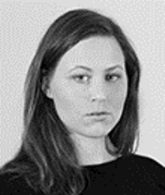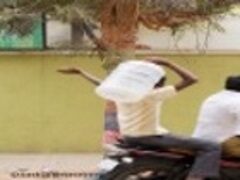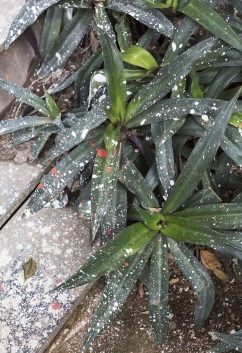Saskia Groneberg
bangaloREsident@MOD
Saskia Groneberg, born in Munich in 1985, studied Communication Design at the State Academy of Art and Design Stuttgart. After graduating, she completed a Masterclass (Meisterschülerstudium) for photography at the Academy of Fine Arts in Leipzig.
In her artistic work, she looks into the design of human environments. For the past several years, she has been particularly interested in artificially moulded nature, finding its expression in parks, landscapes and ornamental plants. She questions and interprets this artificial nature as projections of longings and needs which arise from certain cultural, political and social circumstances.
In her projects, Saskia Groneberg pursues her questions without making them a mere superficial subject of discussion. Instead, her observations and phenomenological investigations correspond to a search for traces that she finally puts into contexts and associates with other forms.
Her work Büropflanze (2012) is a seemingly scientific research project on German office fauna. In this extensive work that reminds one of old illustrated botany books, one can see precise black and white photographs of office plants in their natural environment and a herbarium collection of plant parts, archived with the help of a scanner. Accompanying texts by employees offer a glimpse into the plant owner’s psyche. The collected cuttings continue to exist as a living archive in a laboratory-like installation where they strike roots and grow. This work was awarded the German Prize "gute aussichten_new german photography 2012/2013" and was shown at exhibitions, nationally and internationally.
Her recently completed book and video project called Vesuv, Venus (2014–2015) is a fragmentary story in pictures in the setting of the first large landscape park in mainland Europe, the Wörlitzer Park. Tourists move like figures in a tableau vivant in the dreamlike, historic scenery of the park. In her mostly classically composed photographs, Saskia draws a connection to landscape painting and deliberately disguises the aspect of time. Winter follows spring, detail follows sequence, dream follows deconstruction. Idyll is an illusion, the park an artificially created, dynamic place which has to be continuously maintained, renovated and ploughed. This becomes evident when looking at details such as railings, growing aids and the traces made by agricultural vehicles.
In Bangalore, Saskia plans to visually deal with Bangalore’s sadly questionable image of a ‘garden city’. She will put the botanical garden Lalbagh, which has already sparked her interest during a previous visit in Bangalore, into focus. The historic park which has undergone continuous change in its 250-year history, is not only a place of botany but also in particular a local recreation area and tourist attraction. Saskia seeks to shed light on the role the park has played for the rapidly growing city of Bangalore. Conversely, she is interested in the role the city plays for this historic park. Exploring this controversy constitutes an exciting research opportunity!


